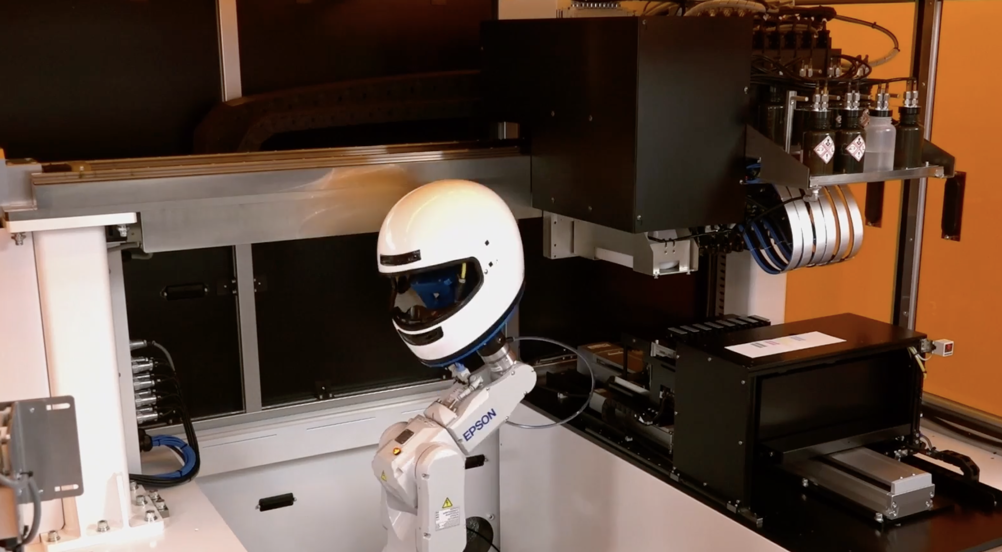A new direct-to-shape printing concept using robotics and printheads that move to follow the shape of curved items such as crash helmets will also be shown.
Separately, Epson is targeting a variety of high-speed industrial markets with its new PrecisionCore D3000 single-pass printhead, which is suitable for both aqueous and UV ink applications.
It’s Epson’s first native 1,200dpi head, and features nozzle-level ink recirculation.
Target applications include folding cartons, corrugated packaging, flexible packaging, labels, textiles and décor.
Hybrid Software has already announced that its subsidiary Meteor Inkjet has developed a head driver card for the new head, and it will show a 4m-wide test rig at Drupa.

Epson has made improvements to its SurePress label press that promise higher productivity and quality, and has also launched a new direct-to-fabric printer, the Monna Lisa 13000.
The latter is targeted at localised production applications and boasts a small footprint and is described as “an affordable single-step printing solution”.
“We will start selling it this summer. It is Epson’s first inline pigment printing textile printer,” explained Duncan Ferguson, vice president at Epson Europe’s commercial and industrial printing division.
“There are three separate fluids, not two, so we have a pre-treatment fluid and we also have a density enhancer and overcoat fluid. That’s important because you not only need to have good quality look, you need good quality feel.
“You have different ratios of fluids depending on the substrate you’re using. It means you can get rid of all the post-treatment functions – washing, steaming, drying etc – which means it is affordable not only as a printer itself but as a process for other people to come into the market other than traditional textile printers,” he explained.
The SureColor F1000 dye-sub gains a new jumbo roll option – up from 60kg to 300kg – to enable non-stop production at up to 255sqm/hr.
Its large-format production range has been boosted by the new uprated SureColor SC-P20500 64-inch wide aqueous printer which gains a 12-colour inkset. It is targeted at fine art, posters and indoor signage applications and prints at 19.2sqm/hr and has a 1.6-litre bulk ink solution.
It succeeds the current SC-P20000 model.
The Japanese manufacturer will also showcase a host of compact and easy-to-use devices targeted at the micro production and personalisation of items such as promotional goods, including the new SureColor V1000 A4 flatbed UV printer and the entry-level SureColor F1000 DTG printer launched at Fespa earlier this year.
A new portable scanning table, the SD-10, is specific to Epson devices and enables media profiles to be created quickly and easily.
Epson also aims to boost its sustainability credentials by expanding its ‘Use, Use & Reuse!’ programme.
This involves a combination of reconditioning devices at customer sites, refurbishment where devices are prepped for return or resale, reuse of printer parts and cartridges, and the refilling of ink cartridges.
Ferguson said Epson intended to expand its own refurbishment facilities as well as working with partners.
A new option to recondition devices at a customer’s own premises has also been launched.
“We have just stared a reconditioning programme with two models, the SureColor S80600 and S80600L, which are our biggest selling signage printers in Europe.
“Any printer approaching five years old is eligible for the programme if they are in a serviceable state. This has been started in the UK and we intend to roll it out in other countries in Europe during this year.”
Some of Epson’s other Drupa product launches remain under wraps for the time being.










